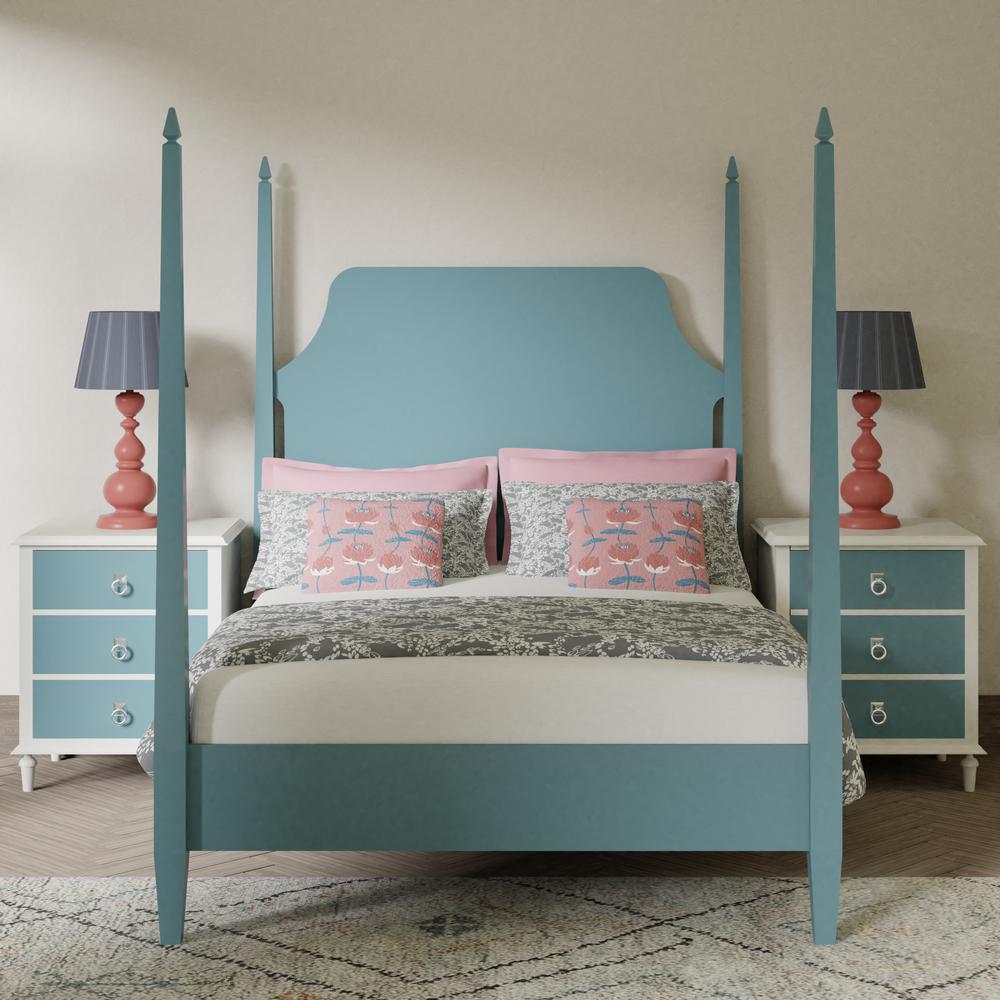How to paint your wood bed frame: a step by step guide
Whether you’re looking to update the look of your room or simply breathe new life into an old piece of furniture, painting your bed frame can be a rewarding and creative project. Let’s dive in…

Materials and Tools
Before you begin painting, make sure you have the necessary materials and tools. Here’s a list of items you’ll need:
- Paintbrushes: Different sizes for various painting techniques.
- Sandpaper: To smooth the surface and create a better adhesion for the paint.
- Primer: An essential step to ensure the longevity of the paint job.
- Paint: Choose a type suitable for bed frames, such as latex or oil-based paint.
- Drop cloths: Protect the surrounding area from paint splatters.
- Screwdriver or wrench: To remove any hardware or components hindering the painting process.
- Masking tape: For precise edges and clean lines.
Preparing the Bed Frame
Proper preparation is crucial if you want to achieve a professional-looking finish. Follow these three steps to prepare your bed frame for painting:
Step 1: Cleaning
Thoroughly clean the bed frame, removing any dust, dirt, or existing finish. A damp cloth or mild soap solution should be sufficient.
Step 2: Sanding
Use sandpaper to smooth the surface and create a better bonding surface for the paint. Sand in the direction of the wood grain until the bed frame feels smooth to the touch.
Step 3: Removing Hardware
If possible, detach any hardware or components, such as knobs or bed slats, to ensure an even and hassle-free painting process.

Priming the Bed Frame
Priming is a vital step that helps the paint adhere better and provides a smoother and more durable finish. A quality primer creates a barrier between the wood and paint, preventing bleed-through and enhancing the colour of the topcoat.
You should consider the following to ensure a professional finish when applying prime to a bed frame:
- Application: Use a brush or roller to apply an even layer of primer to the bed frame. Ensure complete coverage, focusing on any imperfections or exposed wood.
- Drying Time: Allow the primer to dry as per the manufacturer’s instructions. It typically takes primers anywhere from 30 minutes to two hours to dry, but read the label for specific guidelines.
Choosing the Right Paint
Different paint will impact the look and finish of your bed frame. Selecting the right paint is key to achieving the desired look and ensuring the longevity of your bed frame’s finish. Take these factors into account when making your choice:
Types of Paint
Various paints can be used on a bed frame including latex, oil-based, or spray paint. The best type of paint will largely come down to your preferences and the type of bed frame material.
Colour and finish
Consider your bedroom décor and personal preferences when selecting the colour and finish of the paint. Opt for a finish that matches your desired aesthetic, such as glossy, matte, or satin.
Painting Techniques
Now it’s time to apply the paint! Here are three common painting techniques and step-by-step instructions to ensure a flawless finish:
- Brush: Dip your brush into the paint and apply smooth and even strokes, following the wood grain. Overlapping strokes will help achieve uniform coverage. We recommend using a brush as it’s the easiest way to paint your bed frame.
- Rolling: If you prefer using a roller, apply paint using a “W” or “M” motion. Start from the top and work your way down, ensuring an even distribution of paint.
- Spraying: For a more efficient and smooth application, consider using a paint sprayer. Ensure proper ventilation and follow the manufacturer’s instructions for optimal results.
In all these techniques it’s important to not try and complete the painting in one layer. Doing multiple thin layers of paint makes it easier to get a more even finish.
Drying and Curing
Once you’ve completed the painting process, it’s crucial to allow the paint to dry and cure properly to achieve a durable and long-lasting finish.
Follow these recommendations to ensure optimal drying and curing of your painted bed frame:
Drying Time
The drying time can vary depending on the type of paint used. As a general guideline, allow the paint to dry for at least 24 hours, although it’s always best to refer to the manufacturer’s instructions for specific drying times.
Ventilation
Adequate ventilation is crucial during the drying and curing process. Open windows or use fans to promote air circulation and help the paint dry faster. This also helps to minimise the unpleasant odour associated with freshly painted surfaces.
Avoid Contact
Avoid applying any pressure to your painted bed frame until it is fully cured, even if the paint appears to be dry. Even a slight disturbance can result in marks or surface imperfections.
Curing Process
Curing typically takes longer than drying and involves the chemical reaction of the paint. We recommend allowing the final coats of paint to cure for as long as possible — at least 48 hours to ensure the best protection against abrasion.
Reassembling the Bed Frame
Once the paint has fully dried and cured, it’s time to reassemble your bed frame. Here’s a guide to help you put everything back together securely:
- Hardware and Components: Retrieve the hardware that was removed during the painting process. Ensure that all pieces are clean and in good condition.
- Instruction Manual: If you have an instruction manual for the bed frame, refer to it for guidance on reassembly. If not, take reference photos or notes during disassembly to help you remember the correct order and placement of parts.
- Secure Fastenings: Use a screwdriver or wrench to reattach any screws, nuts, or bolts. Make sure all connections are tight and secure, ensuring the stability of the bed frame.
- Test Stability: Once reassembled, give the bed frame a gentle shake to check for any wobbling connections. If needed, tighten any loose fastenings until the frame is sturdy.
Final thoughts
Remember to take your time, follow the steps outlined in this guide, and don’t be afraid to experiment with colours and finishes. With proper preparation, attention to detail, and patience during the drying process, you can achieve a stunning and durable finish that will transform your bedroom.





